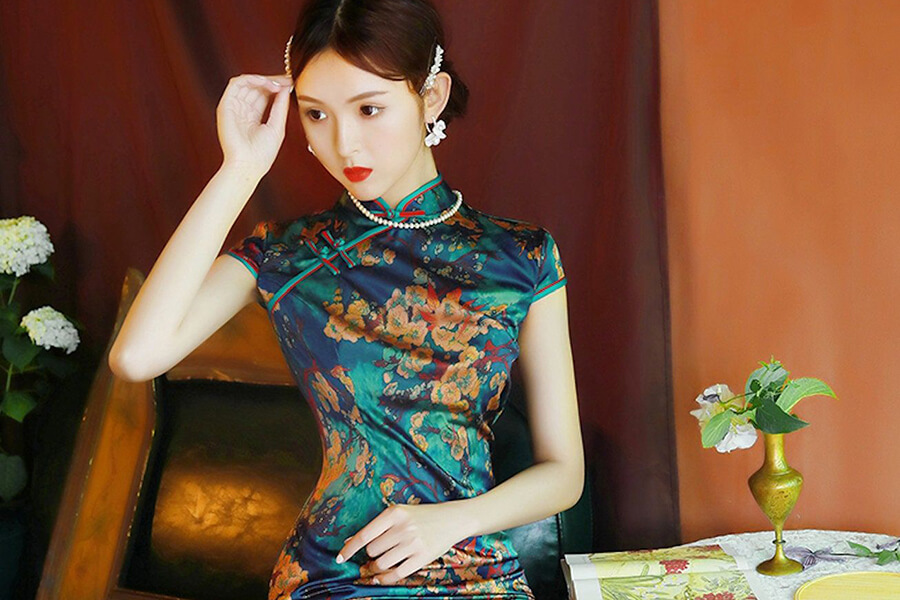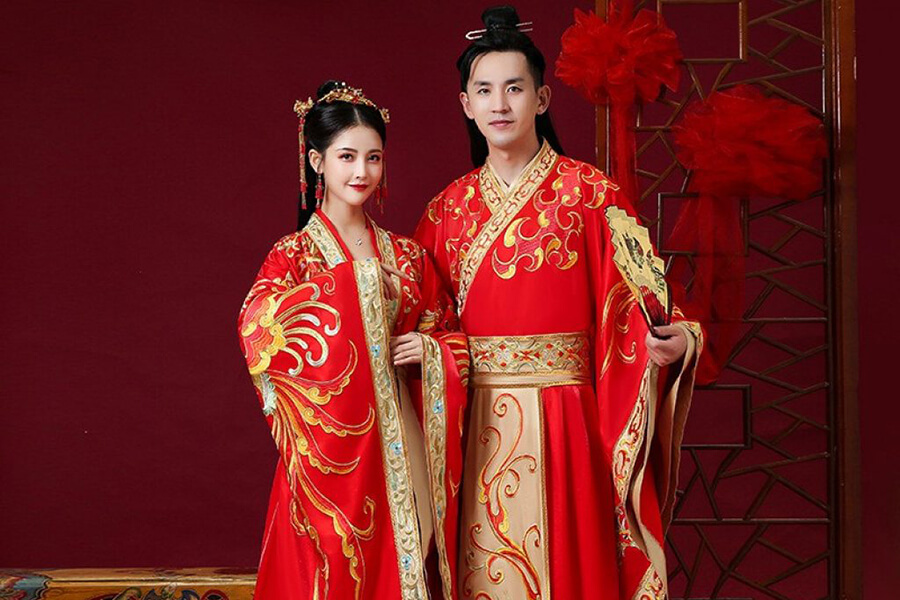The traditional costumes of China, especially iconic ensembles like Hanfu, Qipao, and Tangzhuang, stand as inseparable symbols of the country’s rich and diverse cultural heritage. Hanfu, drawing inspiration from ancient dynasties, exudes romance and sophistication with its flowing robes, crossed collars, and wide sleeves. Qipao, emerging in the 1920s in Shanghai, embodies grace and femininity with its high neckline and form-fitting silhouette. Tangzhuang, inspired by the Tang Dynasty, showcases elegance and refinement with its jacket-and-trousers or jacket-and-skirt combinations.
These costumes not only represent the cultural diversity but also serve as legacies of China’s storied history. From vibrant, colorful robes to modern ensembles like the Zhongshan Suit, each attire tells a tale of tradition, culture, and the Chinese people’s collective consciousness. Moreover, the diversity of traditional Chinese attire reflects the richness and creativity in the art of tailoring, demonstrating the innovative and skillful spirit of the Chinese people throughout various historical periods and epochs.
5 highlights of traditional Chinese costumes
In the grand tapestry of a history extending beyond 5000 years, China’s journey has been adorned with a kaleidoscope of transformations in traditional attire, each epoch leaving its indelible mark. Amidst this historical symphony, China has steadfastly preserved its allure—a beauty etched uniquely in the fabric of this populous nation. Delve into the exquisite details of traditional Chinese costumes with these five noteworthy facets, each unraveling a narrative of cultural richness and sartorial elegance that has withstood the test of time.
1.Design
Embarking on a journey through the annals of traditional Chinese attire reveals a captivating tapestry of straight cuts and indulgent, billowing silhouettes. The garments, meticulously crafted to embrace wearers with a cocoon of comfort, bear witness to the nation’s unwavering commitment to sartorial harmony. Each traditional ensemble, whether adorned with layers and tiers, masterfully orchestrates a symphony of design, avoiding the chaos of excess. Instead, these creations emanate an enchanting presence—a fusion of grace, regality, and refined sophistication. This intricate dance of fabric and form showcases the artistry inherent in every stitch, celebrating the timeless elegance woven into the very fabric of Chinese tradition.
2. Color
Embarking on the chromatic journey of traditional Chinese garments unveils a mesmerizing spectrum that spans the entirety of the color wheel. Amidst this kaleidoscope, emperors and the imperial elite are drawn to opulent tones of deep reds and resplendent golds, a regal selection that mirrors their exalted status. Yet, in the tapestry of Chinese culture, when pivotal moments such as weddings, the Lunar New Year, or venerable traditional festivals unfold, the color red emerges as the undisputed sovereign, casting its vibrant hue as the foremost choice, an emblematic thread weaving through the fabric of Chinese sartorial tradition.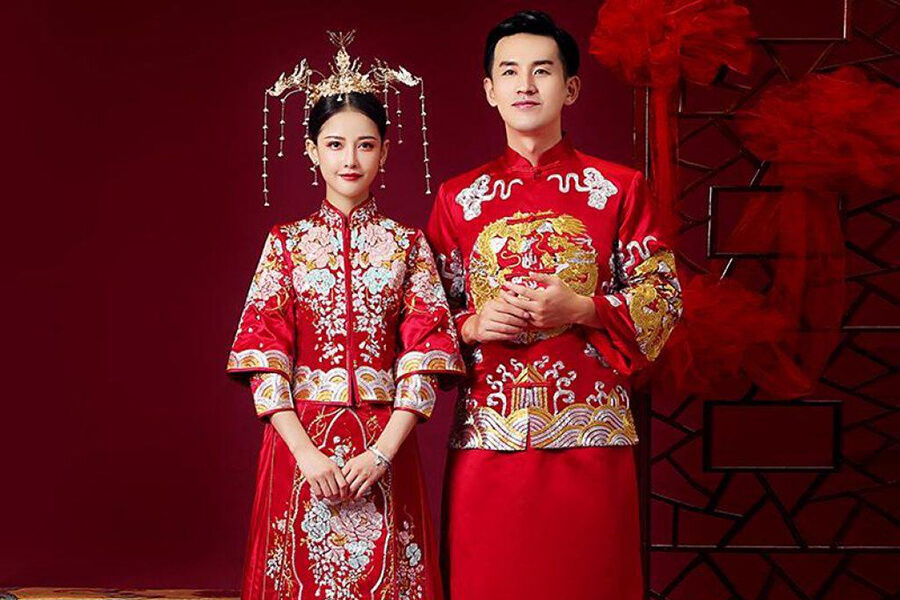
3.Sex
Delving into the world of traditional Chinese fashion for women is like stepping into a rich tapestry of diversity, where each ensemble is a canvas adorned with an array of accessories meticulously curated to the finest detail. These outfits, a celebration of femininity, weave together a story of intricate craftsmanship and elegance. In stark contrast, the realm of men’s attire takes on a more straightforward elegance. Embracing simplicity, their ensembles often consist of foundational undergarments, distinguished outer coats, trousers that echo a classic charm, and occasionally, a subtle hairpin to punctuate the ensemble with a touch of understated refinement.
4.Material
Winding through the corridors of time, the fabrics weaving traditional Chinese garments have gracefully adapted across epochs. A symphony of linen, cotton, and silk threads has been orchestrated to create these exquisite ensembles. Within this textile tapestry, silk emerges as the reigning star—an embodiment of opulence, grace, and an unparalleled sense of comfort that it tenderly bestows upon those who don its embrace. Each thread tells a story of evolution, a narrative of refinement, and a testament to the enduring allure of silk in the realm of traditional Chinese fashion.
5.History
Unfolding across the canvas of time, traditional Chinese attire has etched enduring and distinctive symbols, encapsulating the essence of each historical epoch. Consider the Han Dynasty, where garments aspired to simplicity, painting a canvas dominated by the profound hues of black and blue. Atop these ensembles, a golden touch symbolized the celestial realms, while down below, black trousers grounded the earthly connection.
Fast forward to the Qin Dynasty, and a nuanced sartorial narrative emerges. Commoners gracefully swathed in the purity of white, a canvas of simplicity. Meanwhile, the elite echelons, monarchs, and queens, curated an opulent aesthetic, embodied in the grandeur of long robes and adorned with jade crowns—a visual symphony articulating their lofty social standing. Each era, a distinct chapter, woven into the fabric of tradition, whispering tales of culture and societal nuances.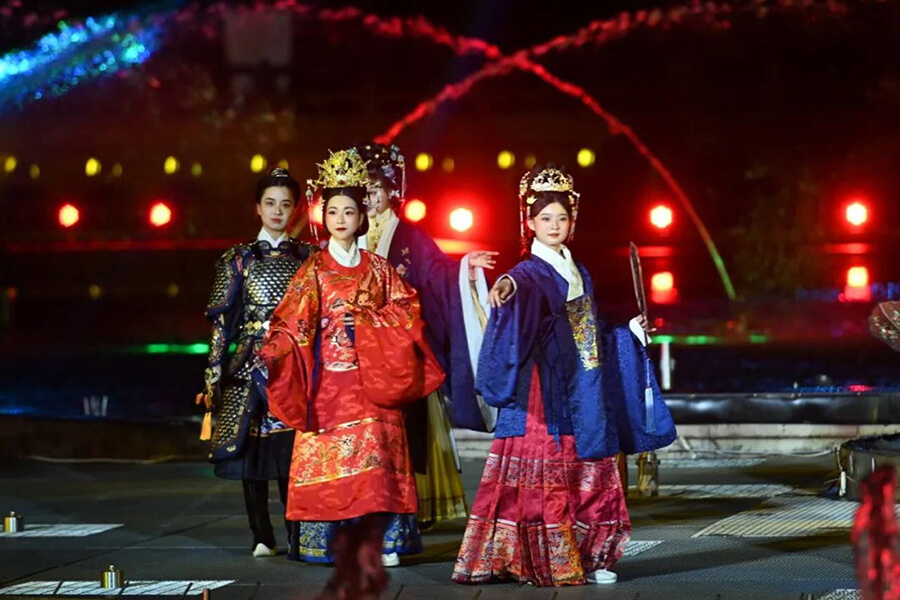
Traditional Chinese costumes through 10 eras
Traditional Chinese costume of the Summer Dynasty
The dawn of the Xia Dynasty, stretching from the 21st century BCE to the 16th century BCE, not only heralded the advent of the first feudal dynasty but also sculpted the foundations of traditional Chinese fashion. Within the realms of this ancient era, a modest yet profound sartorial tale unfolded. Attire, both for men and women, embraced a simplicity that harmonized upper garments and lower trousers, casting a visual symphony dominated by the elegant interplay of black and yellow. In this artistic palette, the upper part of the ensemble, veiled in celestial black, wove a narrative of the heavens, echoing the Xia Dynasty’s belief in the cosmos’ obsidian hue. Contrastingly, the lower garments, bathed in the warm glow of yellow, paid homage to the earthly realms—a symbolic homage to the duality of the Xia Dynasty’s cosmological perceptions.
Traditional Chinese costume of the Zhou Dynasty
In the epoch of the Chu Dynasty (1046 BCE – 256 BCE), traditional attire unfolded into a tapestry of heightened intricacy, surpassing the simplicity of its predecessor, the Hạ Dynasty. The nuances of design manifested notably in the sleeves, collars, and the graceful hemlines of trousers or skirts. Sleeves, a testament to the artistry of the era, unfurled in two distinct styles – one, a sweeping expanse of opulence, the other, a more refined, narrower elegance. Collars, a study in craftsmanship, were meticulously folded and pressed to gracefully cascade to the left.
The hemlines of skirts or trousers, a canvas of stylistic expression, embraced versatility, ranging from the flirtatious allure of knee-length to the sweeping grandeur of ankle-length. In a departure from convention, the garments of this era eschewed the use of buttons or fasteners. Instead, a waistband took center stage, a cinched marvel that not only defined the waist but also became a canvas for opulence. Adorned with precious jewels or intricate ornaments, the waistband emerged as a symbol of both practicality and regal embellishment, encapsulating the distinctive elegance of Chu Dynasty fashion.
Traditional Chinese costume of the Qin Dynasty
In the tapestry of the Qin Dynasty (221 BCE – 206 BCE), a profound metamorphosis unfolded within the realm of clothing, adorned with a tapestry of intricate patterns and refined embellishments that surpassed the sartorial standards of preceding epochs. Within this dynastic era, Emperor Qin Shi Huang wielded his influence to orchestrate a significant paradigm shift in the hierarchy of attire, decreeing a regal narrative that resonated through the social strata.
Under this imperial mandate, the majestic long robe became the exclusive privilege of the emperor, its flowing elegance paired with a resplendent golden and black jade crown. The royal echelons, in harmonious accord, draped themselves in garments intricately embroidered with meticulous patterns—a visual testament to their exalted status. In stark contrast, commoners found themselves confined to a more straightforward attire palette, often draped in the purity of white or solid hues. This imperial edict wove a distinctive visual hierarchy, mirroring the intricacies of societal structure and accentuating the resplendent opulence synonymous with the imperial court during the illustrious Qin Dynasty.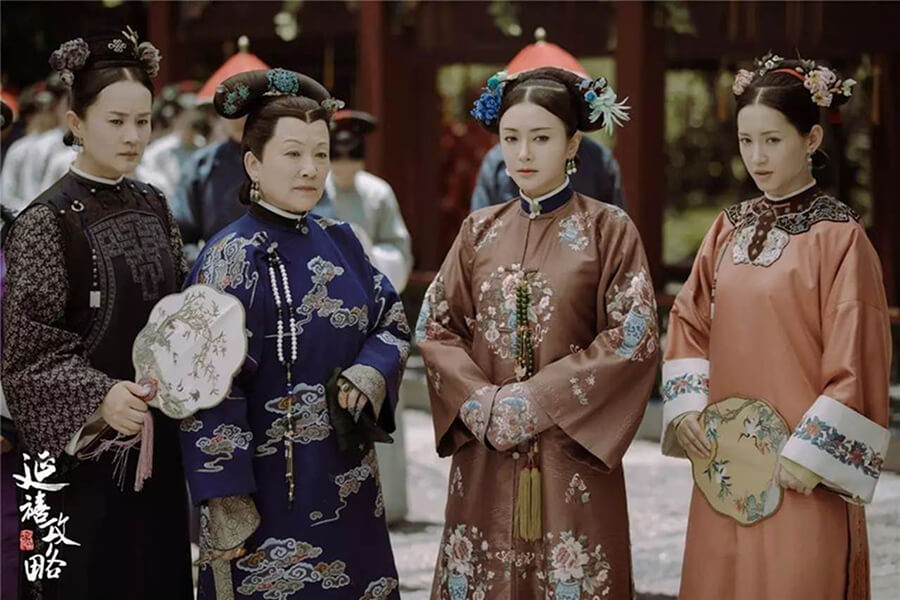
Traditional Chinese costumes of the Han Dynasty
In the grandeur of the Han Dynasty’s (206 BCE – 220 CE) sartorial narrative, echoes of the Qin era resonated, yet a vivid and diverse tapestry of colors unfolded. Within this epoch, attire became not just a canvas but a symphony of hues, breathing life into the clothing of the time. Furthermore, a discernible shift was observed as attention turned to the art of accessorizing, introducing embellishments that transformed garments into captivating ensembles, each accessory a nuanced stroke, adding vibrancy and individuality to the Han Dynasty’s distinctive fashion expression.
Traditional Chinese costumes of the Tang Dynasty
In the tapestry of Chinese history, the Tang Dynasty (618 – 907) emerges as a zenith of prosperity, a period where traditional attire gracefully embraced a newfound sense of openness and liberation. Departing from the rigid conventions of earlier dynasties, Tang Dynasty clothing became a canvas that skillfully balanced modesty with a nuanced revelation of the human form’s beauty. Women’s ensembles, crafted with intricate precision, artfully uncovered the delicacy of the neckline and the elegance of collarbones, casting an enchanting spell.
The color spectrum of garments transcended the simplistic hues of bygone eras, ushering in a vibrant and harmonious blend that painted the fabric of Tang fashion. Yet, amid this kaleidoscope, the resplendent shades of golden yellow and the opulence of silk remained an exclusive prerogative, reserved solely for the emperor and empress. This curated palette not only accentuated regality but also preserved an unmistakable aura of distinction within the royal regalia of the Tang Dynasty.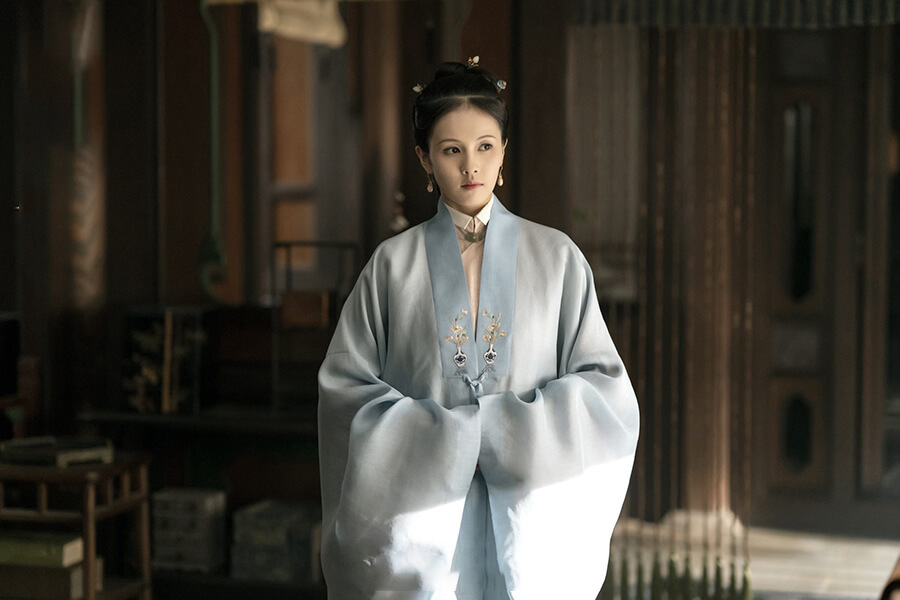
Traditional Chinese clothing of the Song Dynasty
In the exquisite tapestry of the Song Dynasty (960 – 1279), attire emerged as a canvas painted with a more subdued yet sophisticated palette, departing from the vibrant hues of the Tang era. This era is celebrated for its neutral tones that exuded an understated elegance and refinement. Enveloping both men and women, the ensemble consisted of a short inner garment, its snug sleeves a testament to meticulous tailoring. Over this, a graceful outer coat unfolded, boasting wide sleeves and a cinched waist, a silhouette that epitomized the era’s sense of timeless grace.
For men, trousers completed the ensemble, while women embraced the flowing allure of wide skirts that cascaded beneath. Each garment, a brushstroke on the canvas of Song Dynasty fashion, echoed a harmonious blend of subtlety and sophistication, defining an era where attire became a manifestation of refined aesthetics and cultural nuance.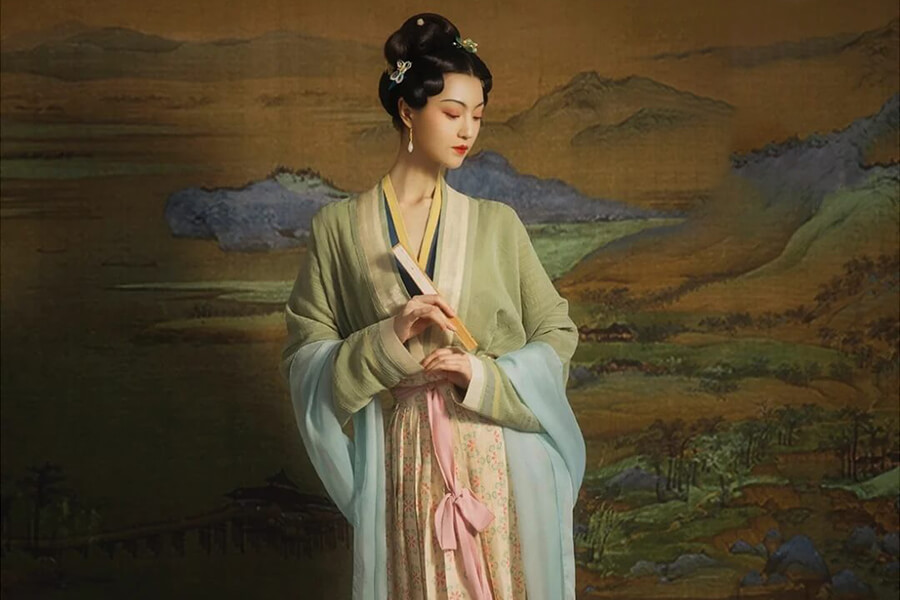
Traditional Chinese costumes of the Yuan Dynasty
In the era of the Yuan Dynasty (1295 – 1368), a tapestry woven under the influence of Mongol rule, attire echoed the distinctive cultural hues of the Mongolian landscape. Women of regal descent graced themselves with a headdress characterized by a lofty and elongated peak, crowning their presence with an opulent red cloak woven from silk, intricately embroidered with the shimmering embrace of gold thread. Meanwhile, those of humbler standing adorned simpler black cloaks, their attire mirroring a cultural stratification that transcended fabric.
In the masculine realm, men predominantly donned short, tailored jackets paired with trousers. The waistline, adorned with a dance of pleats, was not merely a stylistic flourish but a practical nod to the nomadic essence of Mongolian life—a thoughtful detail enhancing mobility, particularly for the equestrian pursuits integral to the cultural amalgamation of Yuan Dynasty fashion.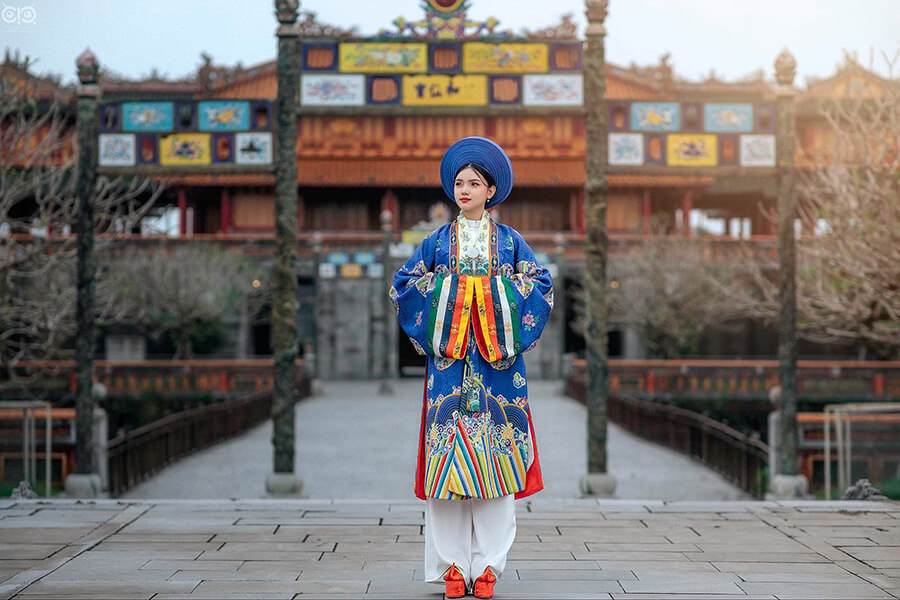
Traditional Chinese costumes of the Ming Dynasty
In the illustrious epoch of the Ming Dynasty (1368 – 1644), the threads of tradition intertwined, reminiscent of the Tang era’s sartorial elegance. Yet, a distinctive note echoed in the realm of women’s attire, where the canvas unfolded with a nuanced dance of up to three pleats and skirts that cascaded wider, an ode to feminine grace.
For women of noble lineage, the attire of choice was a resplendent, long cloak adorned with sleeves that billowed wide, a vivid palette of colors, and an intricate tapestry of floral embroidery. Meanwhile, the everyday women embraced a palette of lighter hues, donning short jackets paired with gracefully flowing skirts, cinched at the waist by the embrace of a silk sash. As the sun set on the imperial horizon, men in official roles draped themselves in a distinguished ensemble—a one-piece garment harmonized with a gracefully wrapped headscarf. Conversely, the common man’s attire unfolded in the poetry of short jackets, complemented by the artful drape of a head covering, a symphony of Ming Dynasty fashion that traversed the realms of tradition and everyday life.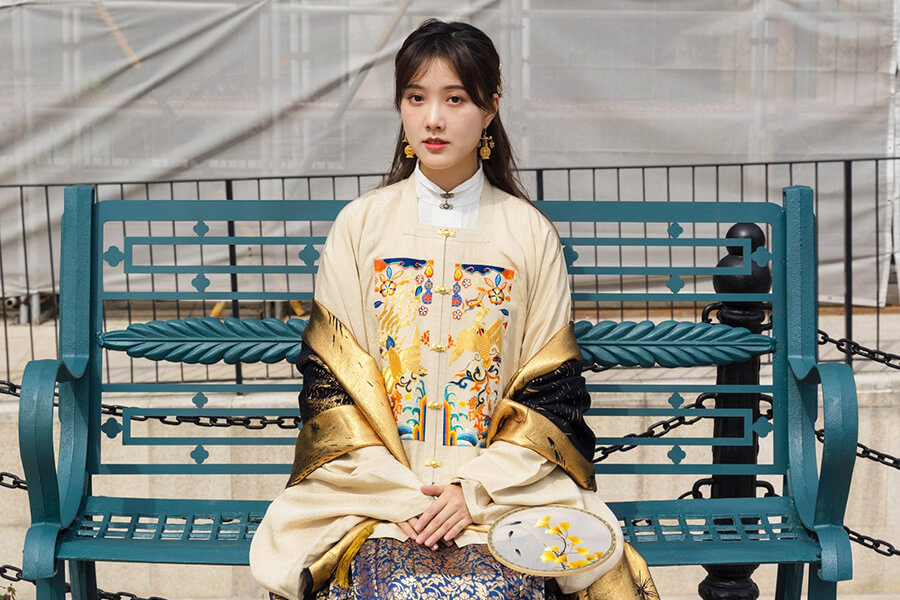
Traditional Chinese costume of the Qing Dynasty
In the sweeping panorama of the Qing Dynasty (1636 – 1912), a chapter scripted under the dominance of the Manchu, attire became a canvas reflecting the elegant strokes of Manchu influence. Sleeves, meticulously tailored, embraced a compact grace, while collars ascended with a modest grandeur, creating a silhouette that echoed the distinctive characteristics of Manchu design. Buttons, like precious gems, found their place on the right side of the chest, a subtle yet significant detail weaving together the threads of Qing Dynasty fashion with the intricate charm of Manchu aesthetics.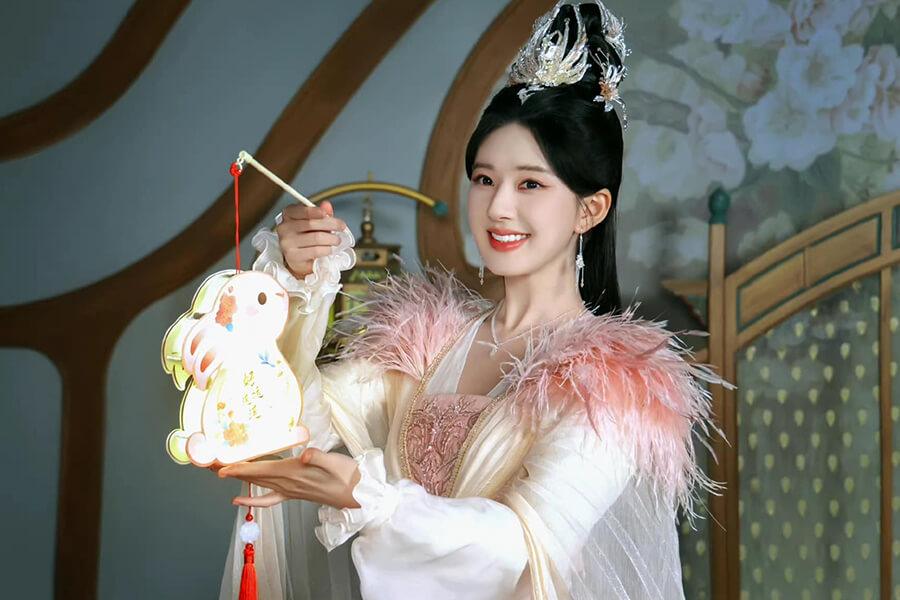
Traditional and modern Chinese costumes
In the enchanting epoch from the Republic of China (1912 – 1949) to the present day, the Qipao emerges as a resplendent emblem, echoing the vibrant tapestry of Chinese heritage. This form-fitting garment, meticulously adorned with front buttons, dances gracefully in tandem with short or long trousers for men, a symphony of elegance and sophistication. As time unfurls its chapters, the Qipao metamorphoses into a dynamic canvas, embracing a rich diversity of designs and patterns—a testament to the ever-evolving creativity seamlessly entwining traditional allure with a contemporary flair.
Even in the present moment, the Qipao stands as a beacon of distinction, encapsulating the very essence of Chinese femininity—enticing, unrestrained, yet eternally refined. Moreover, this sartorial masterpiece has traversed geographical boundaries, finding a chorus of admiration in Southeast Asian realms, Vietnam among them, where its timeless allure reverberates harmoniously across cultural borders.